Happy New Year from the Pacific Ocean!
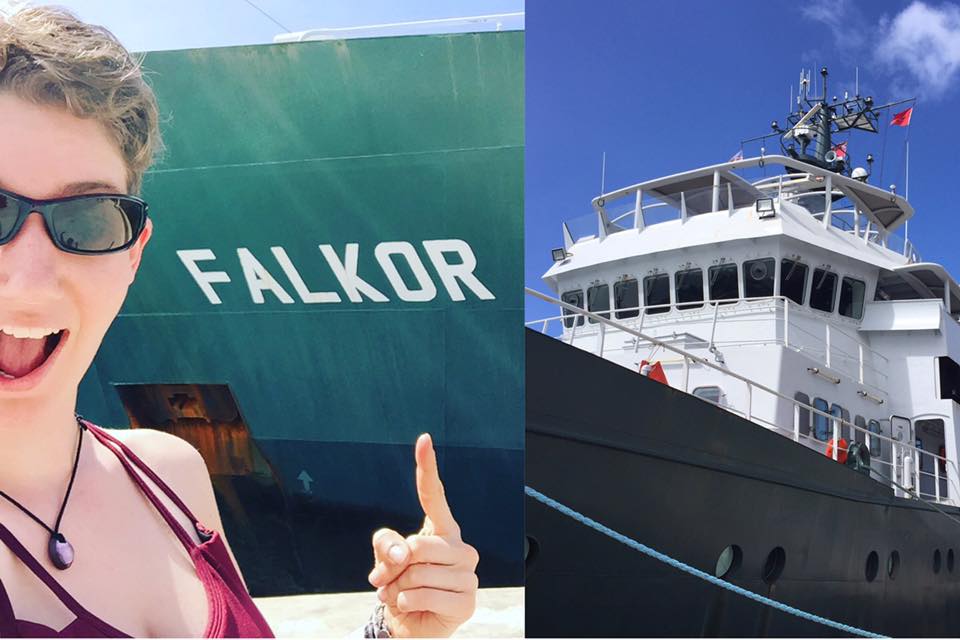
I’m writing today from the outer lounge of R/V Falkor, the research vessel I’m currently working on as an artist-in-residence. At this very moment we’re motoring through the middle of nowhere, but thanks to our Very Small Aperture Terminal (VSAT) there’s satellite Internet on board!
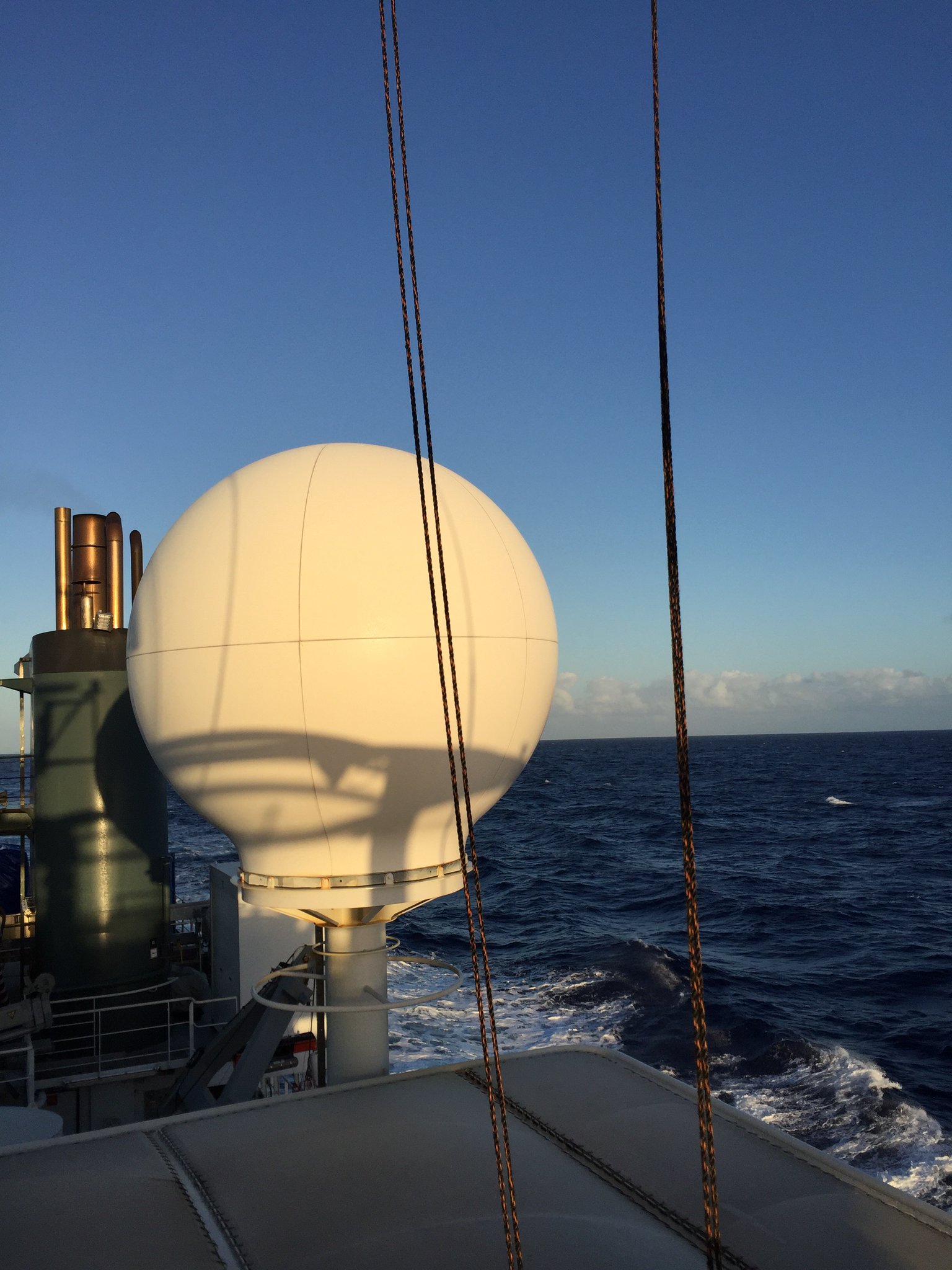
The science team on board are surveying the ocean floor using multibeam mapping, and I’m doing my darndest to learn all I can about their methods and draw a summary comic for the Schmidt Ocean Institute during our 3-week transit from Guam to Honolulu.
We’re collecting data all the way, but our specific area of focus is the seafloor around the Johnston Atoll, which has never been mapped using this particular technology.
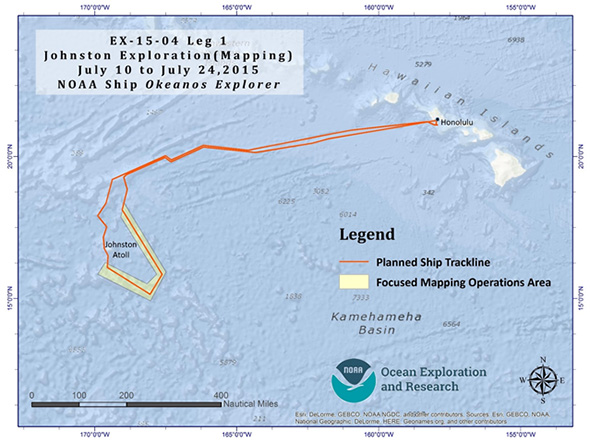
So far the trip has carried us across hundreds of miles of the Pacific, with roaring trade winds tossing the spray into white crests around the ship. I’ve never done an open-ocean crossing like this one before, so it’s been even more of a thrill than usual to scramble up the companionway every morning to drink in the view.

The crew are very welcoming and ready to assist with the science operations, and we’ve been having daily lectures on subjects like the Mariana Trench and its surrounding islands, the history of sonar, and the intricacies of multibeam data.
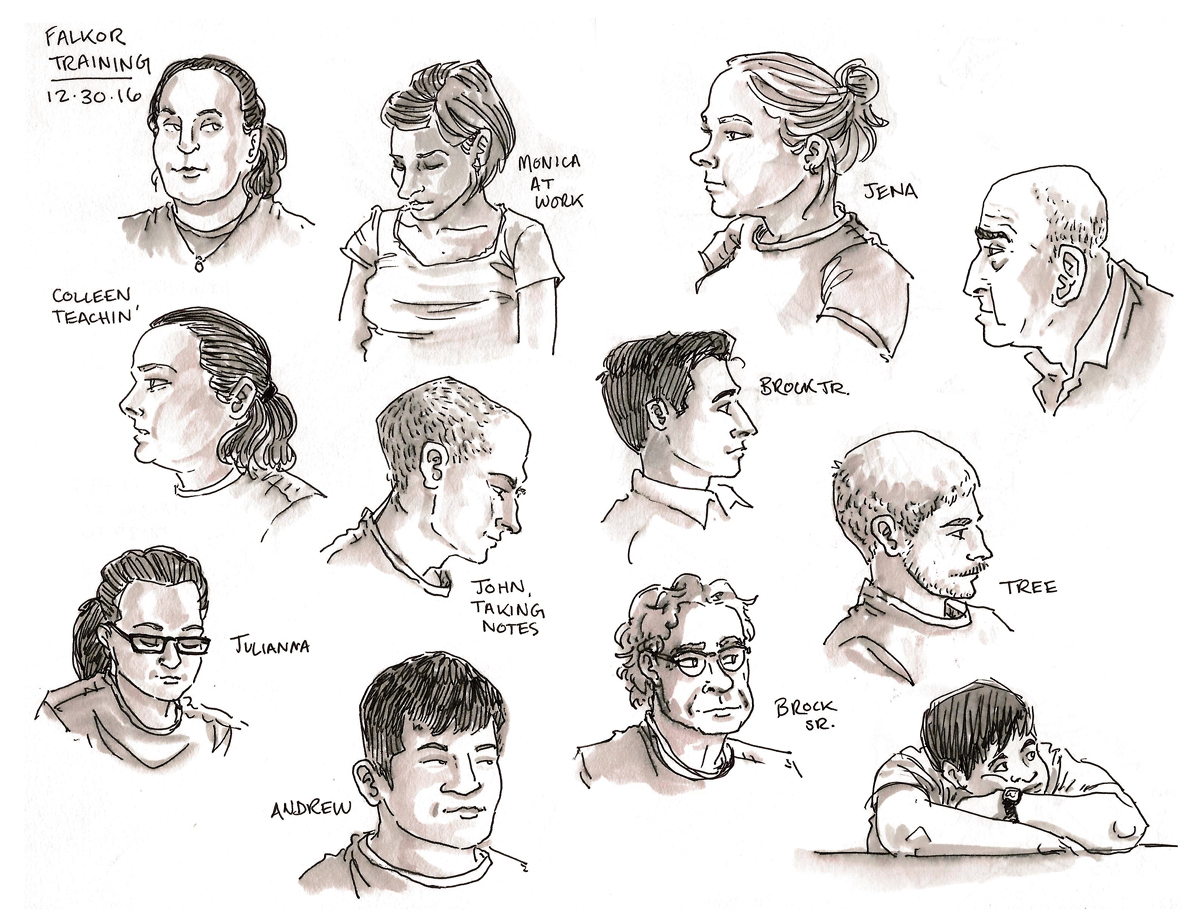
Since it’s not every day you find yourself on a state-of-the-art research vessel, I thought I’d answer some general questions from Twitter! Here’s what everyone was curious to know:
How loud are the engines?
Quite loud on deck! My berth is two decks down, so it’s fairly insulated from the noise when I’m sleeping at night, but there’s a general rumble at all times. Between the rush of the wind and sea and the roar of the engines, you have to speak up to be heard when you’re outside.
How are day-to-day tasks different here than on a sailing ship?
Unlike previous trips where I’ve been embedded with a tall ship crew, there’s not much for me to do here from a vessel maintenance perspective. There are no lines to haul or sails to furl—the crew generally keep themselves occupied with navigation, engineering work, and watchkeeping duties. There’s still lots for them to do, but a lot of it is outside my area of expertise, so I’m getting on with the drawing work.
The science team is monitoring the control room as we map the ocean floor to get a sense of what we’re passing over, the marine technicians are processing data and making sure the systems and sensors stay online (you can even follow live cruise data here), and the housekeeping staff do an amazing job of keeping everything spick and span. The vessel is more of a floating research station than anything, so there are more departments with greater specialization, rather than a collective team who all take turns handing various tasks.
This leaves me somewhat at loose ends—I’m used to being more active—but I’ve got my work cut out for me when it comes to creating this comic, so I’m taking all the time I can to draft blog posts, work on outreach projects, and script the story that will explain our time here to the outside world.
How does the vessel handle?
Given that we’re motoring against the trade winds, the ride has been a little choppy. We did adjust our course to a lower latitude so that the wind is coming at us aslant rather than right on the nose, which means we’re not being slowed down quite as much. In the next few days we’ll turn north toward the Johnston Atoll.
There are stabilizers on board, which help keep things relatively level, but we still make liberal use of Non-Slip Shelf Liner—just like I do back home on my angled drawing board!
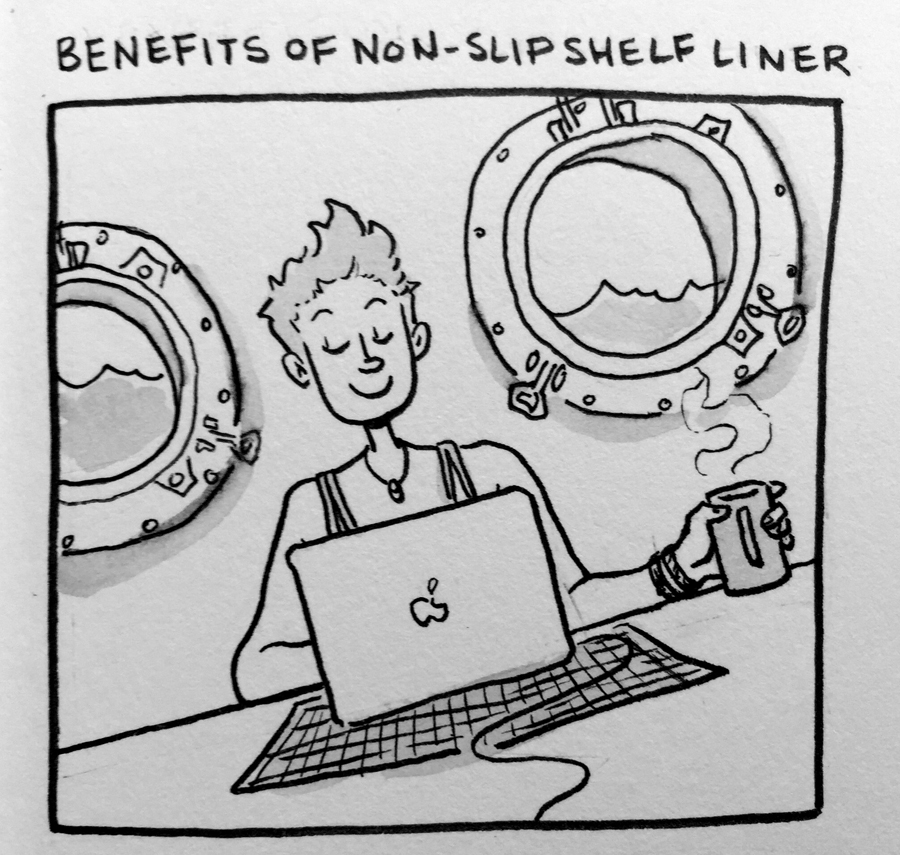
How are you getting along with the scientists? Was there any friction to start?
The science team are fantastic! We have a wide range of specialties, so I’m learning a lot about the terrain we’re covering from various angles (oceanographic, geologic, etc.). They’ve all been very patient with my barrage of questions about how things work and the lengthy time it takes for me to work out anything mathematical.
Is there a lot of turnover in the research crew?
Different research teams join Falkor every time there’s a new cruise. This particular trip is unique in that it’s a hybrid Transit Cruise. The ship needed to get back from Guam to Hawai’i, and John Smith (our lead scientist) applied to piggyback some of his mapping research on top of the already-scheduled travel days. All three of the science crew have been aboard Falkor before for various other research trips, so while there’s a high turnover from trip to trip, the overall pool of people associated with the vessel is pretty well-connected.
There are five of us “outreach” crew members: myself, Andrew (Graduate Student from Guam), Brocks Jr. and Sr. (Ambassadors from 11th Hour Racing, a program of the Schmidt Family Foundation, and Sail Martha’s Vineyard, a maritime training program benefitting underserved populations on the island of Martha’s Vineyard), and Jena (High School Teacher from Hawai’i).
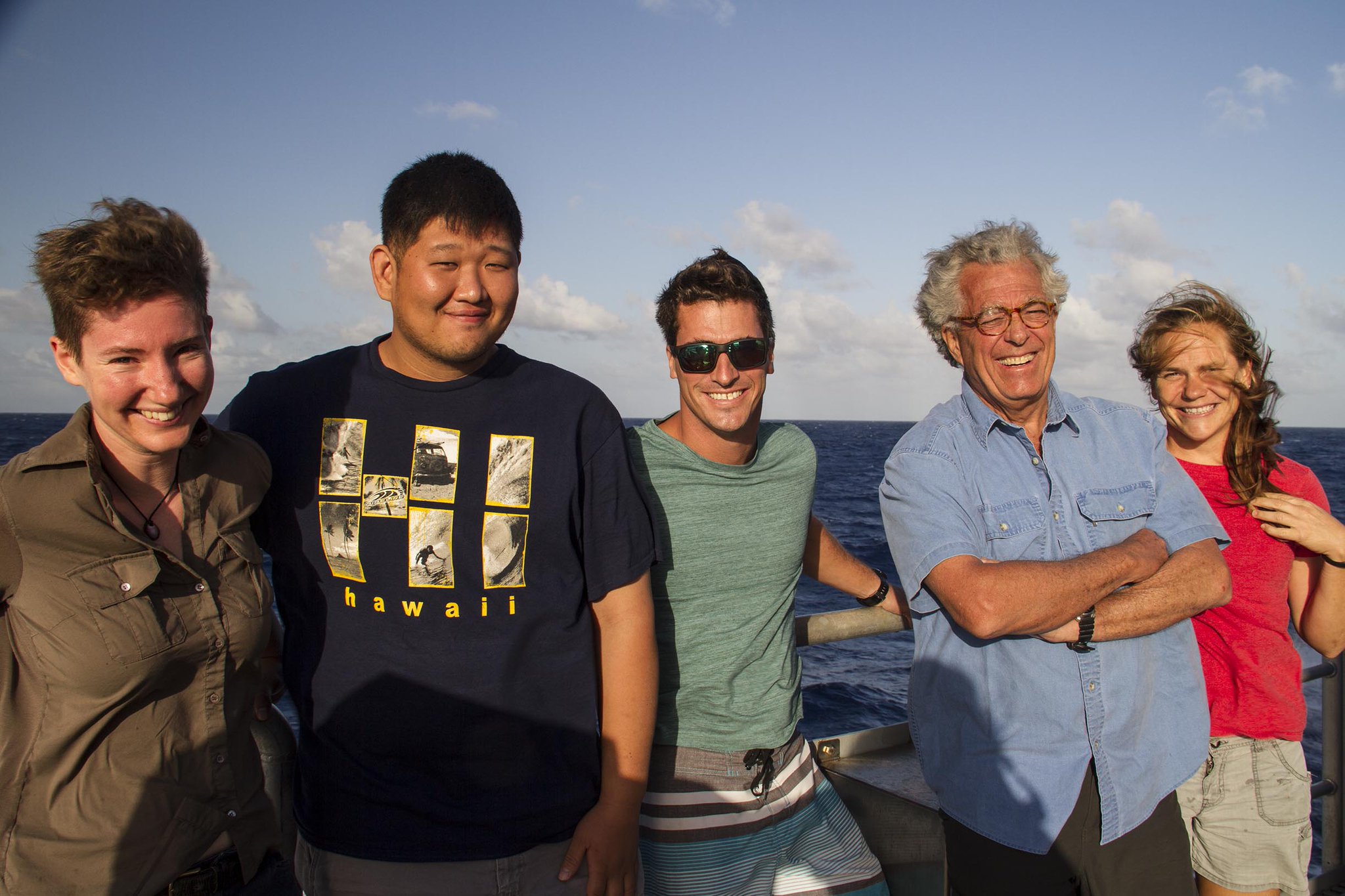
Is there an initiation rite for new crew?
I’ll get back to you. So far nobody’s covered me in krill.
What’s the best part? What’s the worst part?
Best: Working on deck with the whole world swaying and the air whipping around like warm silk—especially after months of Pacific Northwest winter.
Worst: Trying to draw straight lines in a rough seaway.
What’s everyone eating?
Our chefs, Peter and Greg, are magnificent. Before I arrived a lot of the shoreside support team were cooing about how lucky I was to be going aboard because of the food, and now I see what they were talking about. In addition to a steady supply of snacks and treats, we get really magnificent meals three times a day (with an extra late-night meal for those standing watch). I mean, just look at this New Year’s Day feast:
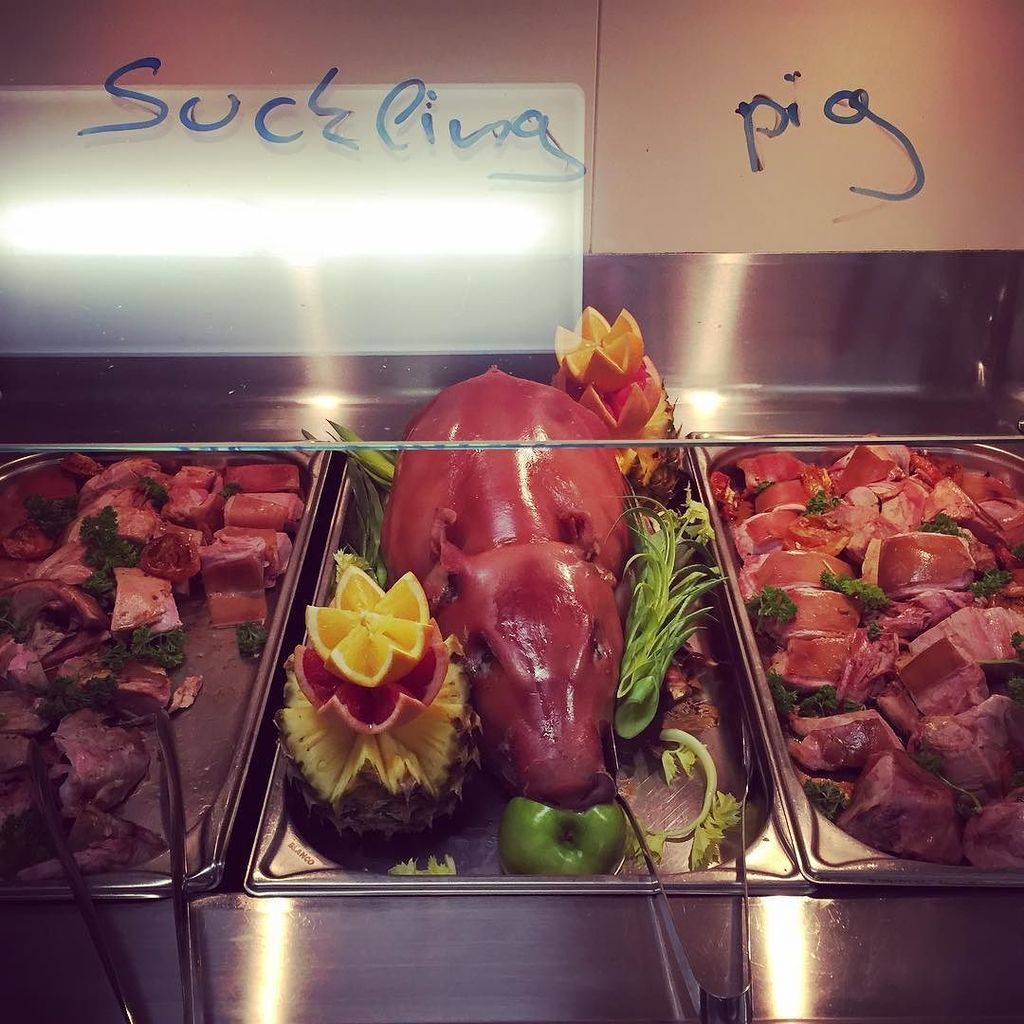
Wait, I thought pigs were bad luck on boats?
I hadn’t heard that one before! (Most of my interest in pigs has been around their history as a good luck tattoo.) A cursory Google suggests that pigs are considered bad luck specifically on fishing vessels, which might explain why I hadn’t heard of the notion before. If anyone has anecdotal evidence: leave a comment!
What are the bathrooms like?
Ahh, the perennial question. Like everything else on the vessel: SUPER NICE. I’m so impressed by the standards of cleanliness and design everywhere on this ship. The heads (that’s what they’re usually called on board) are relatively small, but well cared-for, clean, and modern. I’m used to the old torture-chamber-type pump action heads, but these ones flush with the touch of a button like a standard toilet.
The major restriction: only toilet paper can go down them—absolutely no chemical cleaners—because the waste system is biological! The bacterial colonies responsible for breaking down waste in the blackwater tanks are very sensitive, so we can only use a special cleaning solution for the toilet bowls. I’ll see if I can’t snag the chief mate and find out a little more about how this specific system works, since I’m curious myself.
—
That’s probably enough for today, so I’ll get back to sketching this very complicated-looking hydraulic sea crane. If you have more questions about life at sea, drop me a line in the comments or on Twitter at @LuBellWoo! You can also read up on the rest of the cruise outreach by following #MappinTheFloor on Twitter, Instagram, and Facebook.